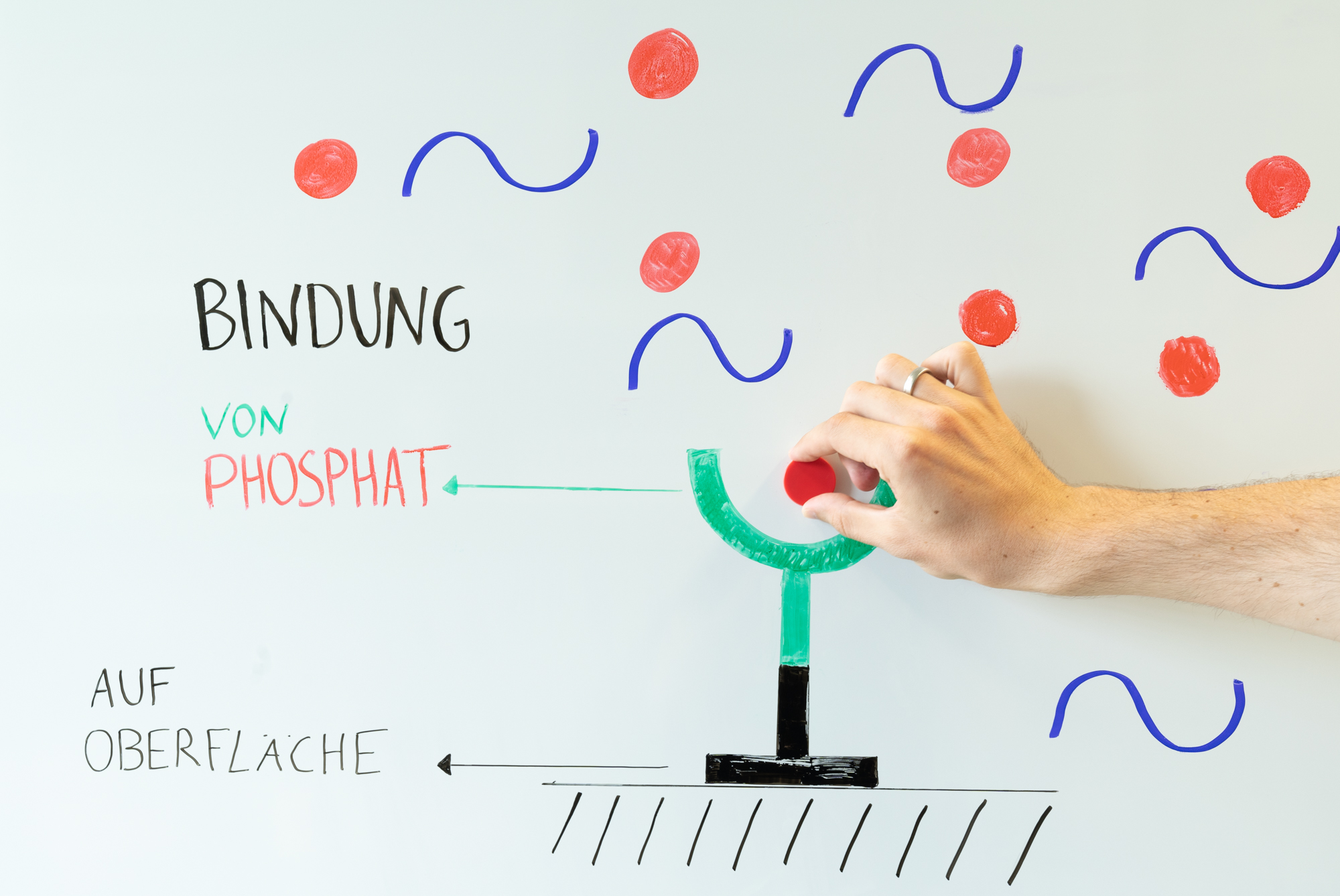Nature as a role model: proteins help with phosphate recovery, thus ensuring clean water and a more sustainable use of resources.
Phosphatfaenger

Challenges
With "Phosphatfänger" (phosphate catcher) we want to contribute to clean waters and the sustainable use of resources.
Due to our way of life, several tonnes of nutrients end up in wastewater every year. If too many of these nutrients end up in the environment, entire ecosystems can collapse (eutrophication). On the other hand, nutrients are urgently needed, especially for agriculture.
One of these nutrients is phosphate. Currently, biological and chemical processes are established in wastewater treatment to remove phosphate. The disadvantage is that the valuable phosphate often ends up as a water-insoluble salt in the sewage sludge and its further isolation is difficult to achieve.
Objectives and project plan
This is exactly where we want to start. Our phosphate scavengers are proteins derived from nature and can specifically bind phosphate and release it again. We apply these proteins to surfaces and thus want to remove the phosphate from the wastewater. The phosphate can be released from the surface and reused as a source of raw materials for agriculture. Our "phosphate scavengers" are also bio-based, highly specific and reusable. With this, we hope to be able to develop a sustainable, but also economic phosphate recovery from wastewater.
Project title
Phosphatfänger
Project duration
Crowdfunding phase:
October 2022 – November 2022
Project launch if successful crowdfunding: January 2023
Funding
Fraunhofer-Zukunftsstiftung
 Fraunhofer Institute for Interfacial Engineering and Biotechnology IGB
Fraunhofer Institute for Interfacial Engineering and Biotechnology IGB